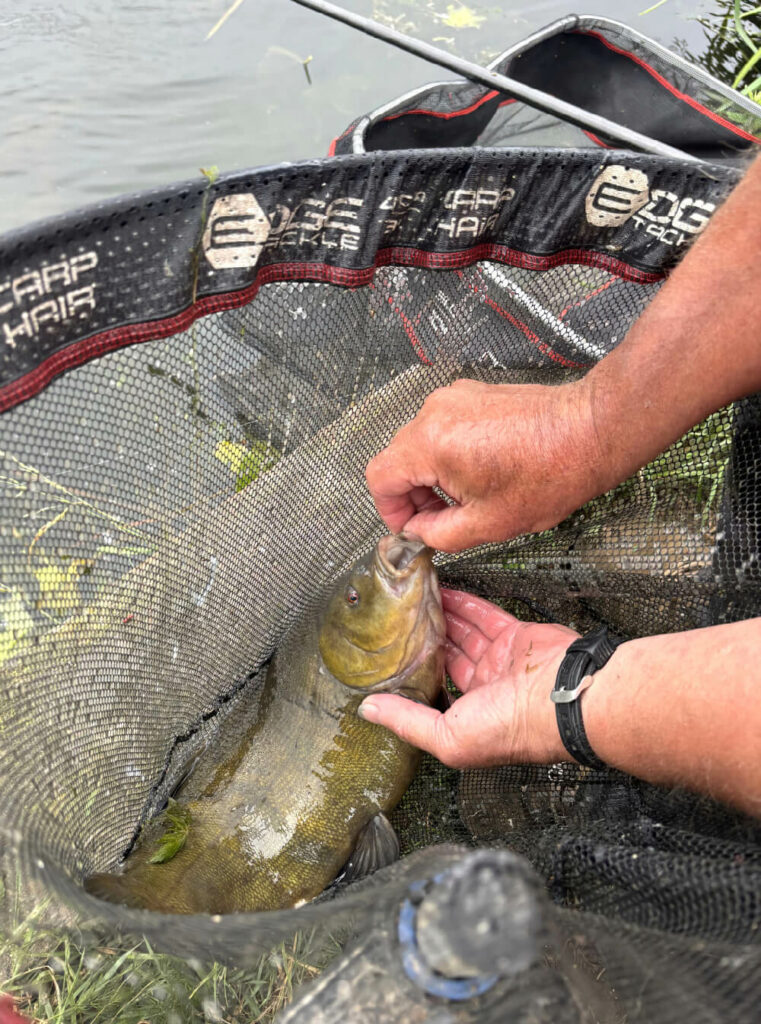Bait Tricks That Catch Fish
Opening Doors
This tench resulted after carefully working a swim with a variety of different baits. Having options to work through gains more consistent results, particularly If something doesn’t perform like it did previously. It can make a big difference changing what you feed and put on the hook. If larger maggots fail to gain positive bites, smaller pinkies will often encourage a keener response. The latter allow bigger quantities to be introduced with less risk of killing a swim. Micro pellets work in a similar fashion, providing lots of particles for fish to graze on, without filling them up. Simple switches between popular bait colours can have an immediate impact as well, pulling instant interest after nothing else has worked. Tench can be fussy feeders, fizzing clouds of bubbles over what you have fed, ignoring hook baits. But not a dark caster in this instance.
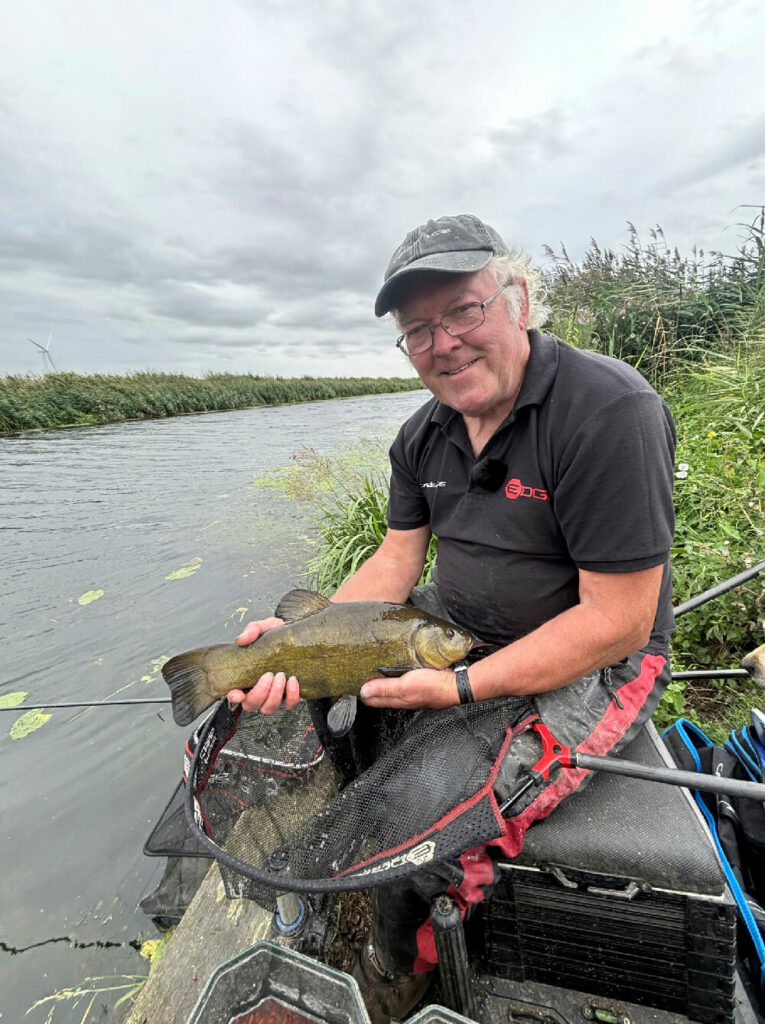
On the Table
There might be situations where a simple bait attack is effective, but there will be many others when you need to find out what fish want, working through a decent selection on your bait tray. I prefer plenty of choices to experiment with, such as maggots, casters, groundbait, feed and hook pellets. I often have more options in reserve, stored in a cool bag underneath, such as sweetcorn, worms, extra groundbait and alternative pellet sizes or colours. I always fill a bait box with water, but more about that later. With my bait table fully extended, there’s room for useful accessories, things like a pellet bander, float bristle grease and elastic lubricant. Also notice I keep the pole winders relating to the tackle I’m using close to hand, just in case I need to recall any details, such as hook length breaking strains, shot numbers and sizes.
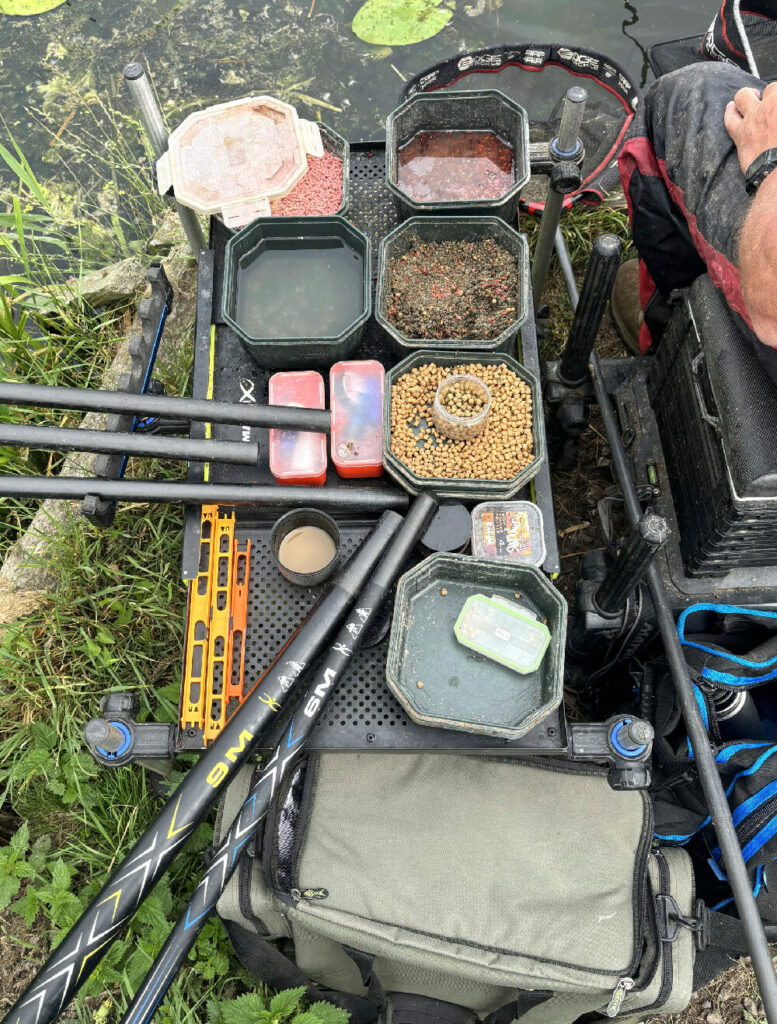
Groundbait Logic
Ready prepared groundbait is more convenient, avoiding having to lug about a heavy drill and whisk, along with bulky bait buckets and riddles. Some say it’s better to use water from the venue being fished, as opposed from a tap. I have barrels of rainwater in my garden, which avoids any possible chlorine issues. I prefer pre-mixing and riddling groundbait before outings, anyway, giving it time to fully absorb moisture and let the particles pump up properly. I can always add extra water on the bank. I put the mix in a large bait box, which gets regular top-ups, rather than cluttering my side tray up with a bigger bowl. Bagged groundbait can always go in the freezer compartment in my bait fridge when I get home, rather than dumping any that’s unused in the margins at the end of sessions. Groundbait isn’t cheap these days, so why waste it?
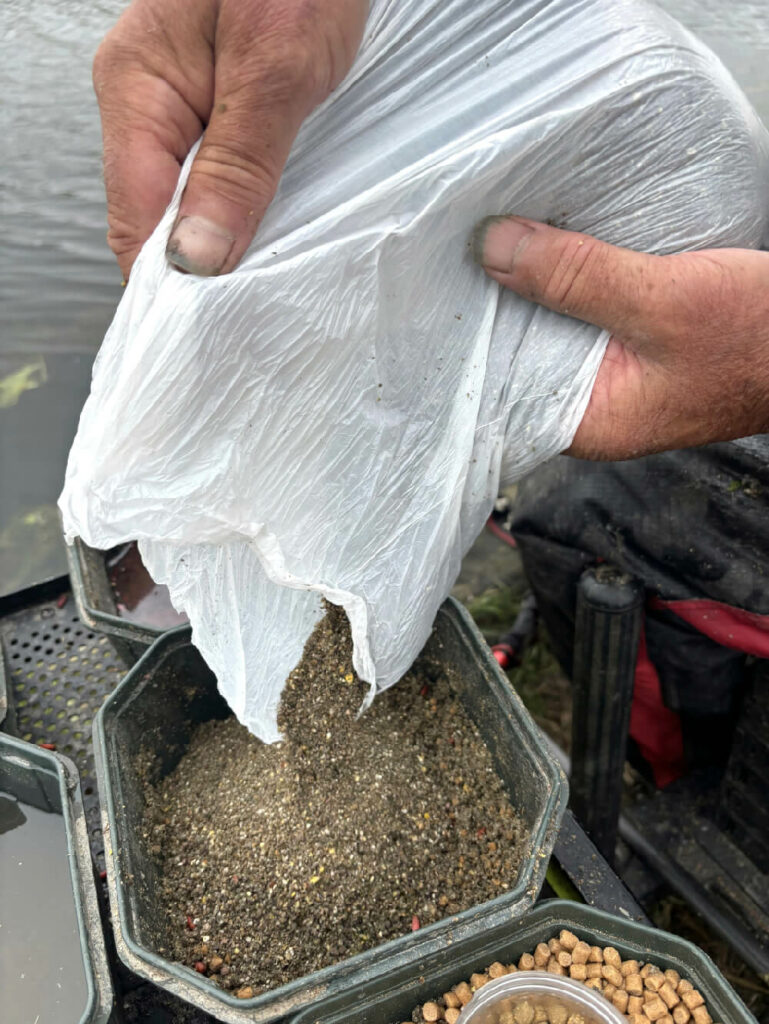
Water Bowl
I have a water bowl next to my groundbait, so small amounts can be flicked over it to prevent drying out, or to create softer balls of feed. It also keeps my hands clean, rather than coating pole sections, rod handles and reels with slime and grime. Water buckets are popular, equipped with long cords for dropping down high banks. However, a spare 3pint bait box does the same job, filling it in my landing net, which has a long handle. A bait tub doesn’t stand too high either and get in the way of other items on a side tray, storing away more compactly when empty. I strive hard to moderate the amount of kit I cart to swims. EVA bait systems are popular, housing various size tubs in a main container with a waterproof top. I’ve been tempted, but my bait boxes have weather-proof flip-top lid options that can be brought into play when needed.
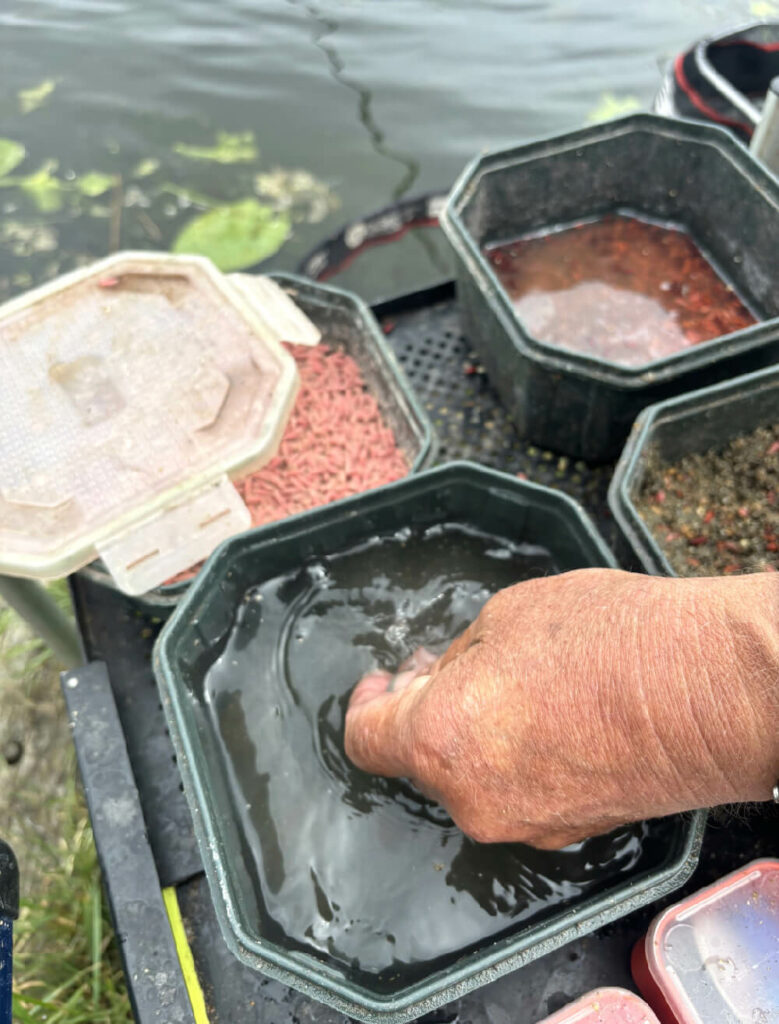
Topping Up
Rather than carrying spare pellets around in the bags they were supplied in, I keep them in cheap plastic food boxes. There’s less chance of spillage, or of them getting wet that way. I top up groundbait with micro pellets as I go along, which allows me to vary amounts, rather than committing the lot in one go. This was towards the end of a session, when the fish were queuing up and micros were working well. I use different types, preferring sweeter light ones for smaller skimmers, switching to Robin Reds or darker krill for bigger bream. Many years ago, tiny white maggots we call squatts were used to give groundbait more pulling power, but that type of bait is hard to get now and expensive. Micro pellets work just as effectively. I found that out on venues where groundbait was barred, discovering they attract and hold in remarkably similar fashion.
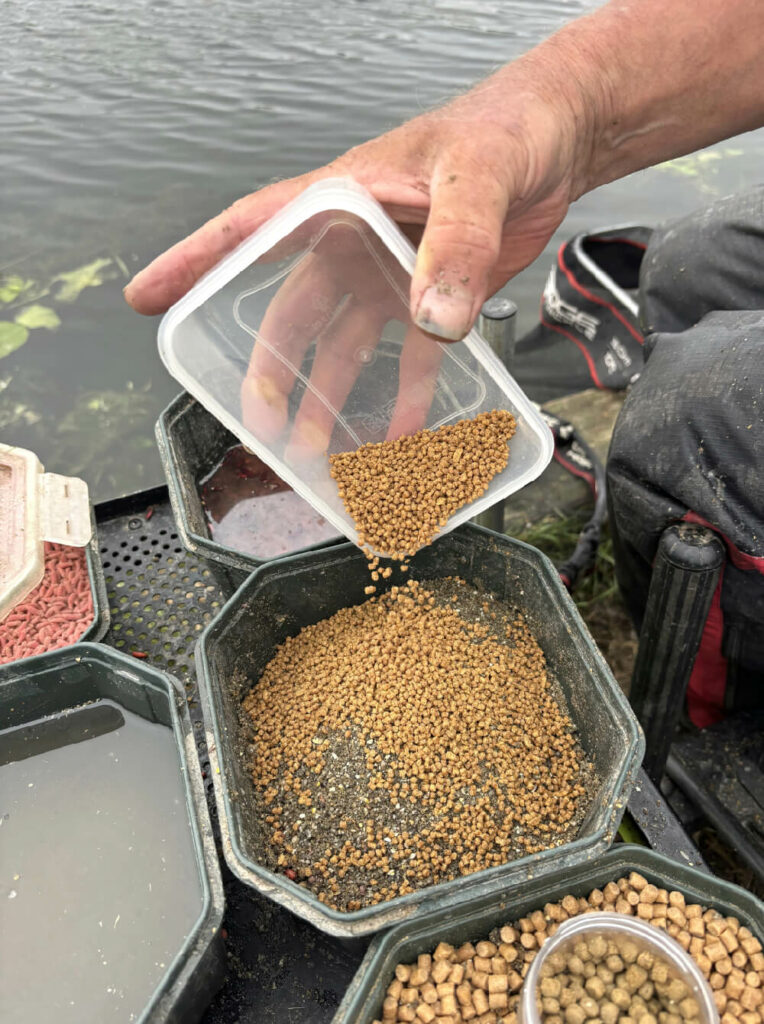
Caster Care
I turn my own casters most of the time. I like them super fresh, otherwise they don’t work very well. Instead of white, I normally use red maggots for this job, because they result in a richer and darker colour. As you can see here, less mature shells match closer to the red maggots I use on the hook, as opposed to the much lighter shades whites produce. Storing freshly turned casters in self-seal plastic bags is better than using plain knotted versions. Apart from being easier to open, they let a minute amount of air in, which helps to keep the bait perfect. I cover casters with water out on the bank, to avoid them turning too dark. They will stay in good shape for several days this way, providing you fridge any unused quantities when you get home. Similar to micro pellets, I add casters to groundbait as I go along. They don’t become buoyant that way.
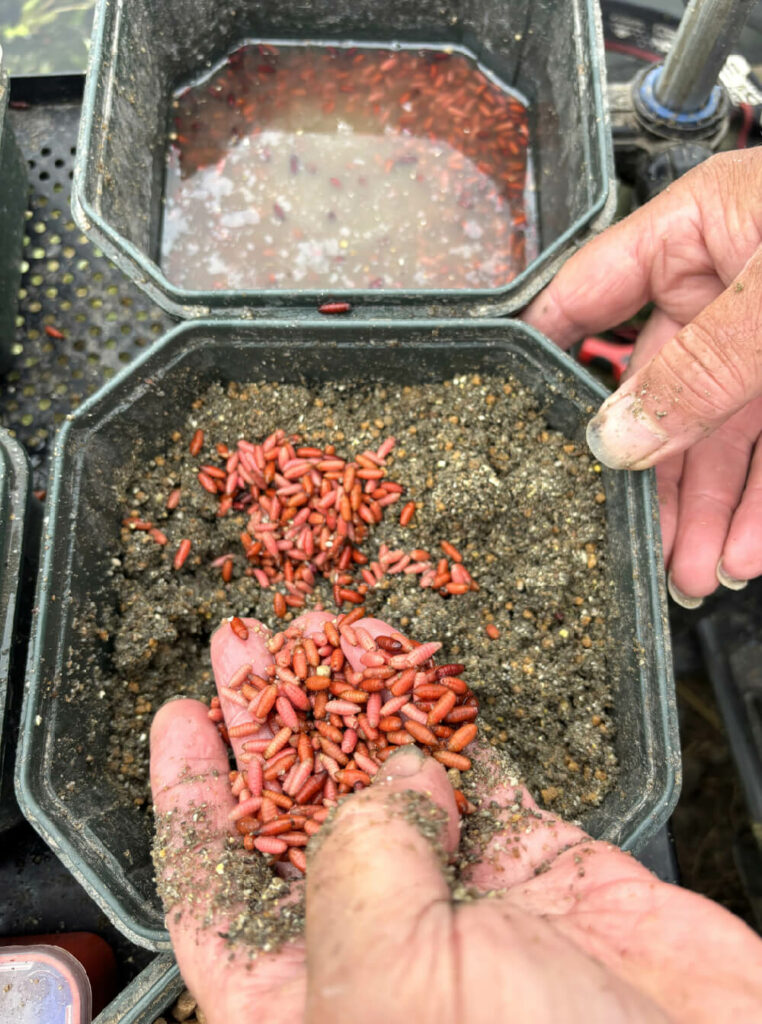
Staying Alert
I had company on this trip. Cadence fishing dog Monty sneaked under my bait table to keep an eye on proceedings. I don’t know how he got past my cool bag, but he managed it without even moving anything. Once I had the swim ticking over nicely with plenty of bites from small fish on red maggots, I could experiment with hook baits. Switching to a single caster often finds better quality, or a double offering for even bigger samples. I also had soft hook pellets, including expanders, which skimmers like. If small stuff attacks these, I will try a banded hard version. Bait changes are important in the way they can alter sessions completely, bringing a better response and upping the fish size. Hemp, worms, sweetcorn or bigger pellets can all do that. Match fishing has taught me to keep working through different baits in order to stay busy.
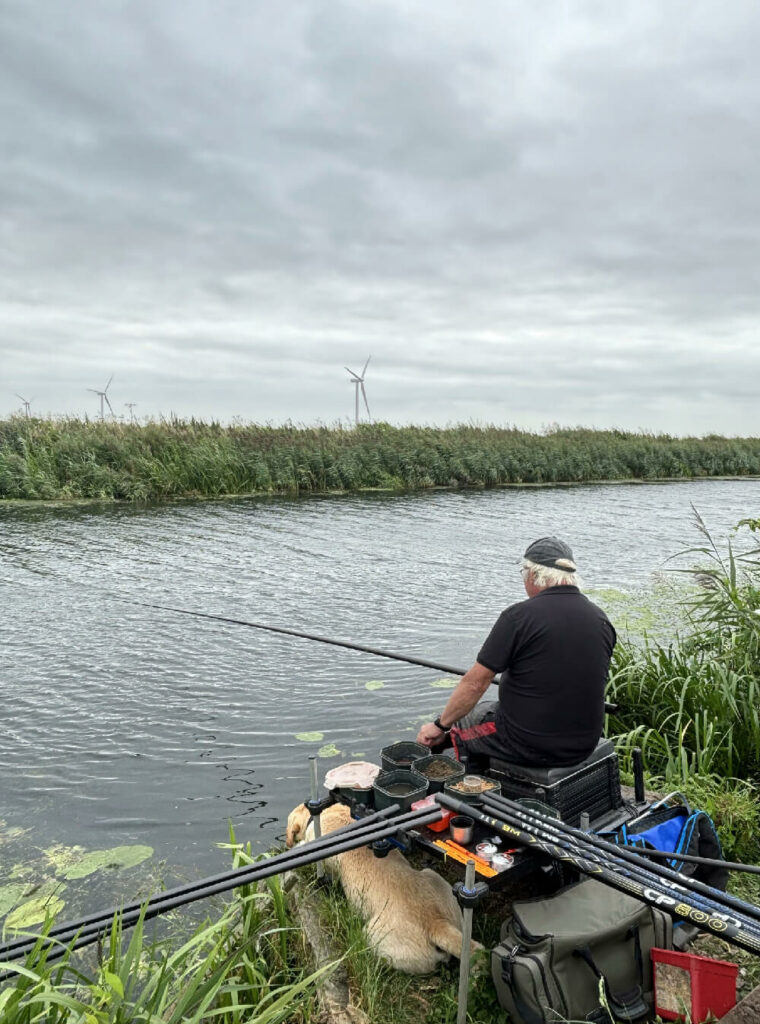
Getting Bolder
If small fish stay active, with no signs of anything bigger moving in, it can pay to start introducing a few larger pellets into groundbait mixes. 4mms are not too much of a mouthful for skimmers, even roach and hybrids will eagerly take them. Banding a hard pellet or using a soft version hooked directly, often helps to get through to find better quality, or any bonus lumps that might be lurking around. In my experience, pellets can work anywhere because most anglers use them these days, but it’s best to tread carefully. Big amounts might be the way to go on commercials that hold a big head of carp, but out in the wilds requires a stealthier approach. Fish in natural venues often become preoccupied with eating groundbait and pellets are the closest thing that resembles that, especially when they swell and soften up in water.
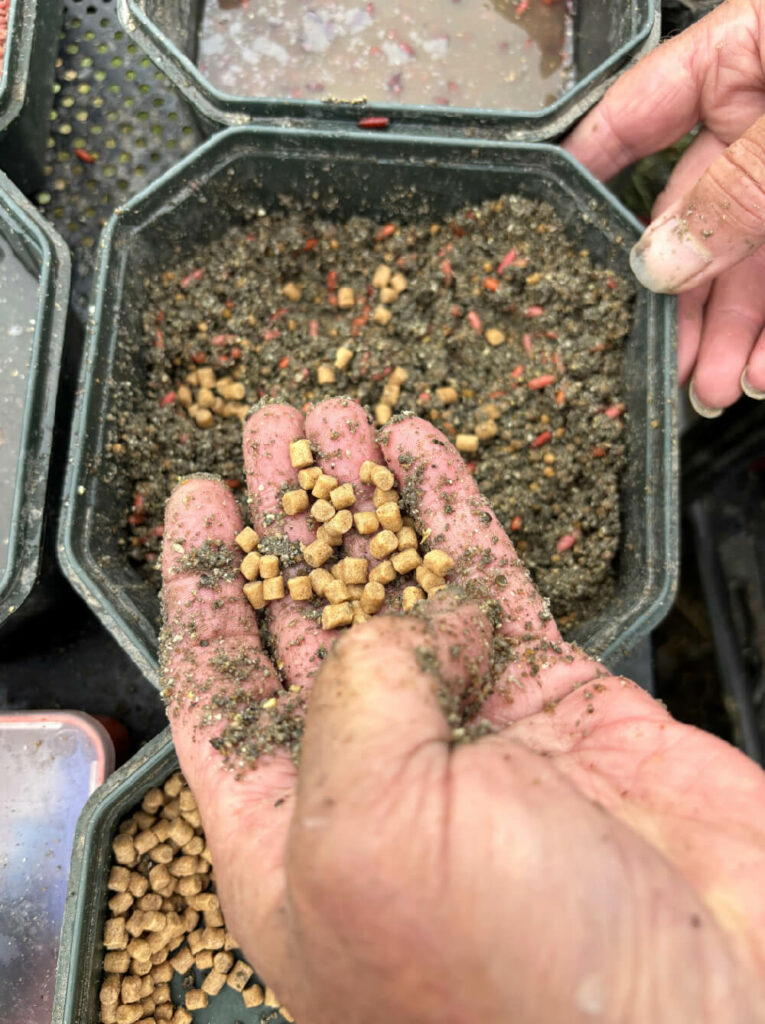
Soft Touch
Skimmers often fizz lots of tiny bubbles over groundbait, like tench, cleverly avoiding anything that looks like a hook bait. They become preoccupied with smaller particles, ignoring bigger items. But one thing that can fool them is a soft and spongy expander pellet. With these it’s possible to almost completely bury a small hook and their buoyancy negates any weight factor. That means when fish are hoovering up or foraging over groundbait, an expander is more likely to get sucked in or be grabbed when disturbed as they lift up enticingly. I often carry a small pot of expanders for the hook, keeping small amounts on standby in the freezer compartment of my bait fridge. They can be used and refrozen many times and are much cheaper than buying soft hooker pellets, which can be the next best thing, providing they are not too crumbly.
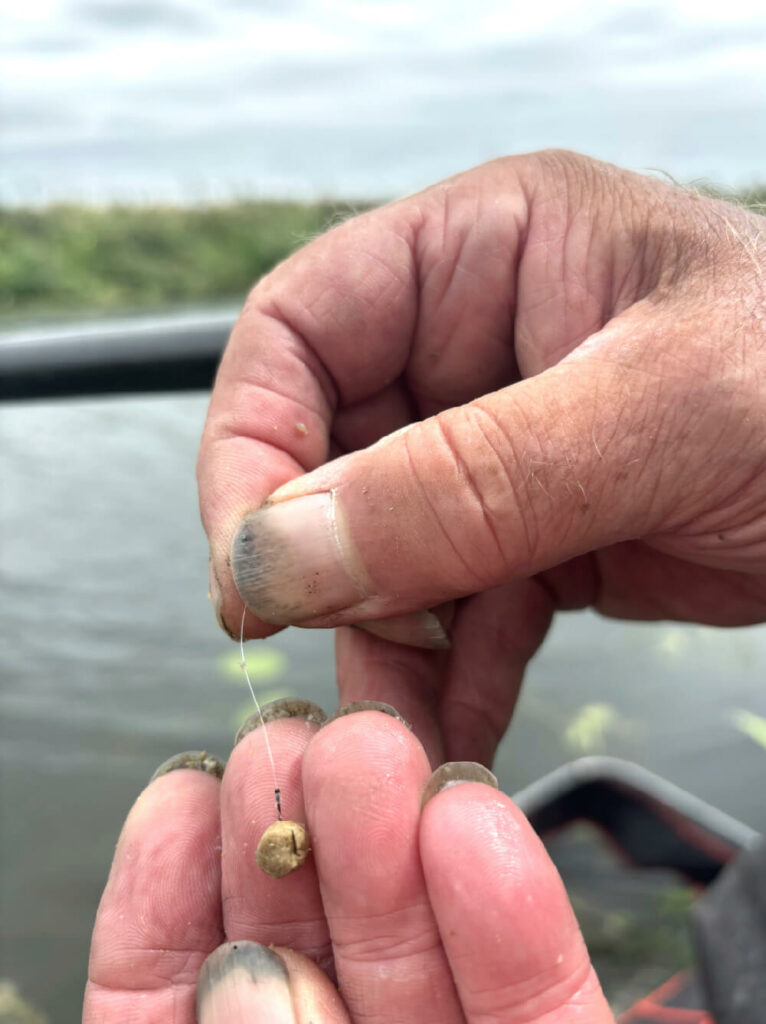
More Options
Having worked in tackle shops, I was always fascinated by what customers told me about the baits they used, often picking up useful tips about things that were effective and where they scored. A pint of maggots might catch fish just about anywhere but will not necessarily be the best thing to use. Certain types of bait perform better on some venues and with a bit of tweaking can be even more lethal. In the white squatt days on canal matches, I accidentally found red ones better, especially when the water was coloured up by boat traffic. Bread punch can also reign supreme on cold affected clear water venues, while hemp has an almost magical ability to bring dour places to life. Fluoro pinkies are another get-out-of-trouble option when most other things fail. Cocktails are great bite inducers too, particularly when trying to fool fussy bream.
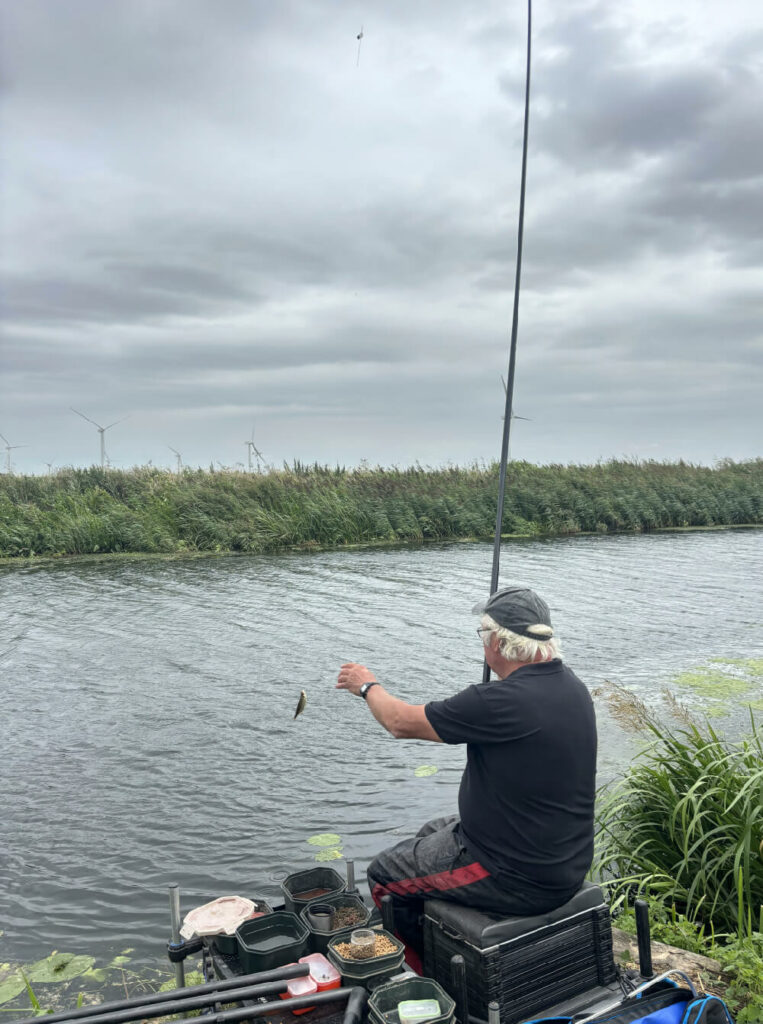
Staying Power
On this occasion maggots were being attacked on the way down by small bleak and rudd, despite using a heavy olivette whip rig. Casters were better but still got some attention from the many bits. Double offerings were ignored or just pecked at. Worm segments didn’t do any better, nor did hard banded pellets. Trying a soft expander and dumping the tackle in, suddenly started finding slightly better-sized skimmers and hybrids, even odd roach. All this proved it pays to keep trying different things. I was catching on 5 metres of my Cadence CP200 Whip, using an Edge N6 2g pole float with 0.15mm Premium Mainline and a 0.13mm hook length. Everything about the tackle was nicely balanced, with plenty of strength factor to cope with such a busy way of fishing, while retaining enough finesse to tempt loads of small fish action.
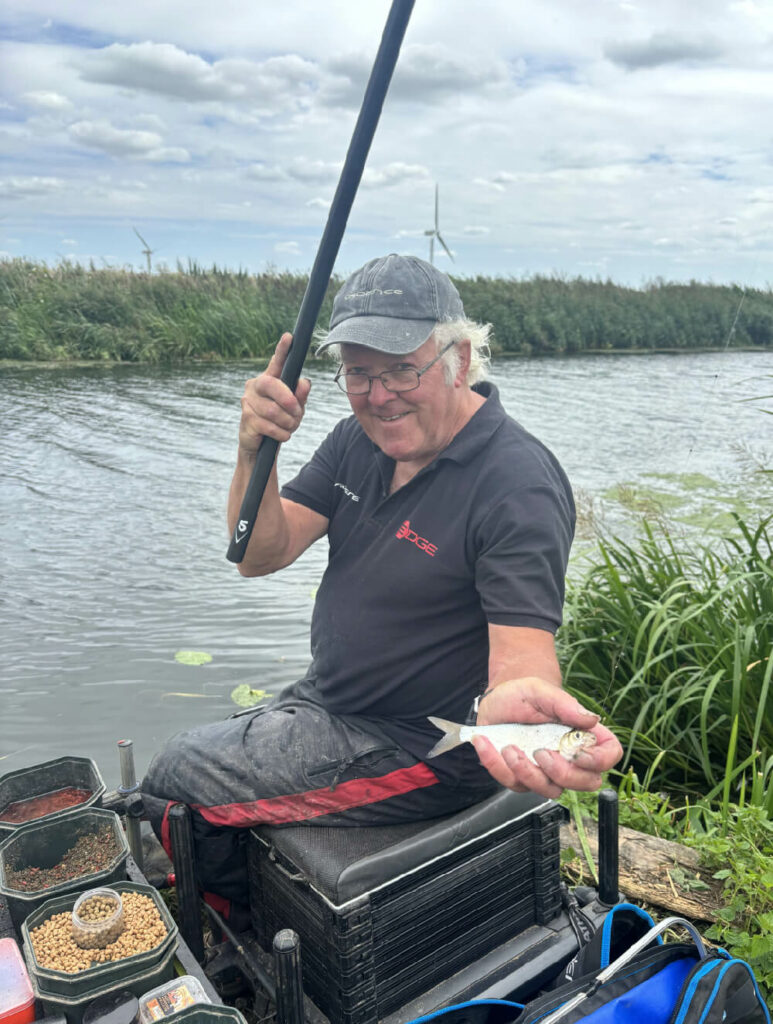
Tipping Point
Having plenty of bait tricks up your sleeve has the potential to add considerably to the amount you catch. On this session I enjoyed a good net of small fish, adding a few better-sized ones along the way, capped off with this bonus tench. Some might think it lucky to land such a weight booster on simple whip tackle, but it occurs with surprising regularity. Edge Tackle and Cadence Fishing provide me with the right gear to make these things happen. But that also requires being prepared to keep experimenting. Bait changes, the way its fed and how its presented, creates even more advantages. I don’t believe in magic fixes, but I do believe in working every peg to its limits. It helps to do that with a varied bait menu. Being prepared to switch about with what you feed and put on the hook, even changing course completely, gains so much more.
